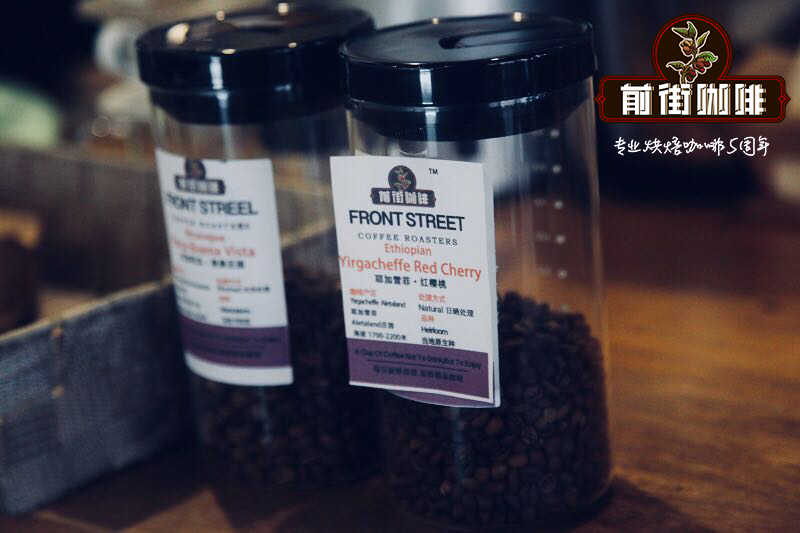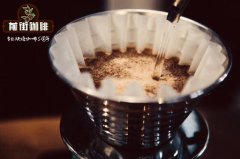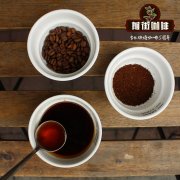What is the purpose of coffee grinding? What is the difference between different kinds of bean grinders?

Professional coffee knowledge exchange more coffee bean information please follow the coffee workshop (Wechat official account cafe_style)
Which do you think is the most important in your coffee set? If it's not a bean grinder, you have to think about it. A good cup of coffee is built to grind the quality and consistency of coffee powder, and the use of a good bean grinder is the first element to maintain the quality of coffee.
"the bean grinder is the basic tool for making a good cup of coffee," said Steve Rhinehart of Internet Channel brand Advanced Prima Coffee. Kyra Kennedy, the maker of the bean grinder brand Baratza, said: "if the grinding is uneven, you don't have to extract coffee." No one buys a bean grinder because they want it. All they want is coffee with a better flavor, and the bean grinder plays a vital role in the coffee with good flavor. "
We all know that "crushing bean grinder" is better than "blade grinder", but the relationship is very complicated, not all bean grinders are the same, from size, shape and material will greatly affect the quality of grinding. "every bean grinder has its own particle size distribution," Kennedy said, in other words, the effect controls cooking. When choosing a bean grinder for your coffee shop and restaurant, you must consider many factors, especially what cooking method the bean grinder should match.
Italian bean grinder
Espresso requires the most fine grinding compared to other brewing methods (except Turkish coffee), which means that in order to get the same amount of coffee, espresso is much heavier than filtered coffee. When the boutique coffee shop offers more concentrated than filtered coffee, the load of the bean grinder will be very heavy, so there is a greater need for an Italian bean grinder for espresso. Coffee seedlings believe that if you want to make more than 60 cups of lattes in an hour, for example, if the amount of powder in a cup is 16 grams, an hour is 960 grams, and about one kilogram of coffee powder, the continuous operation stability of the knife plate is very important. )
Italian bean grinder can be divided into two types: cone knife type bean grinder and flat knife type bean grinder. Both, like Ford versus Chevrolet, have their own supporters.
Cone knife type bean grinder
The cone knife grinder has been the industry standard for coffee for years: the ubiquitous Mazzer Robur and Compak K10. As the name implies, the cone knife type is conical and consists of a male and a female, which makes the grinding speed of the cone knife type higher than that of the flat knife type.
The cone knife type grinding mechanism becomes a bimodal size distribution. When you look at the ground coffee powder under a microscope, the powders of similar size will gather together, mainly divided into smaller and larger particles. The smaller particles limit the flow rate of water through the coffee powder, giving the larger particles more time to reach saturation. Traditional espresso recipes rely on this way to slow down the flow rate. The grinding result of bimodal distribution caused by cone will make the brewed espresso more saturated and full-bodied. The proponents of the flat knife type bean grinder point out that the particle size of these bimodal distribution will produce different saturation velocity, and the different saturation rate determines the extraction rate.
Flat knife type bean grinder
In recent years, people have improved on the flat knife type bean grinder. The flat knife type is composed of two consistent grinding plates that do not interfere with each other's operation, resulting in a more uniform particle size distribution, so that baristas do not have to worry about extracting coffee powder from finer particles when extracting coffee. Extract the bitter taste. The flat knife grinder cannot control the flow rate because it has less fine grinding, but it also forces the barista to fine the grinding scale (with its limits) or to prolong the cooking time. Using these bean grinders makes it easier to concentrate in large quantities, and if you want to jump out of the SCAA concentration parameters, you need a flat knife grinder to do so. The development of the flat knife bean grinder stems from the fact that Matt Perger used the Mahlk?nig EK43 bean grinding mechanism as his drink during the 2013 World Barista Competition (see EK43 article translated by Come True Coffee). At first, EK43 was invented as a spice grinder, a 98-centimeter steel cutter (83 centimeters for Mazzer's flat-knife bean grinder). This huge cutter head helps EK43 create a particle size distribution without its right.
Important Notice :
前街咖啡 FrontStreet Coffee has moved to new addredd:
FrontStreet Coffee Address: 315,Donghua East Road,GuangZhou
Tel:020 38364473
- Prev

What is coffee filter paper? What's the difference between filter paper, metal filter mesh and filter cloth?
Professional coffee knowledge exchange more coffee bean information please follow the coffee workshop (Wechat official account cafe_style) modern people drink coffee some people are quick and may use a capsule coffee machine or go out to buy coffee, but I believe there are still people who like to buy beans themselves, grind beans with bean grinders and buy utensils to make coffee, and this article will introduce follicles
- Next

Advantages and disadvantages of hand grinder with unique amorous feelings hand grinder does not produce heat
Professional coffee knowledge exchange more coffee bean information please pay attention to the coffee workshop (Wechat official account cafe_style) hand bean grinder advantages 1, the price is cheap: household manual bean grinder price generally only needs a few dozen yuan, better style and material, also more than a hundred yuan. In the category of bean grinder, the price is the cheapest. 2. Can be furnished in the house
Related
- What is the Philharmonic pressure? How to use Philharmonic pressure to make delicious coffee
- Why does a hand grinder have more fine powder than an electric grinder?
- In addition to the hot mom, what is the difference between the versions of EK43 | ditting and Mahdi ek43?
- What kind of equipment do you need to make coffee by hand? Introduction to novice starter cooking equipment tools
- Espresso needs to be ground how thick and thin scale entry Italian Coffee Machine Bean Grinder investigation and Grinding course
- How much does it cost to open a small private cafe? How much does it cost to learn coffee? How to operate it?
- The difference between the flavor characteristics of hand-brewed coffee and coffee maker is hand-brewed coffee really better than coffee maker? Can I use a coffee machine to make coffee beans by hand?
- The difference between 01 and 02 of hario v60 filter cup what is the difference between 01 and 02 filter cup opening and cooking flavor
- What's the difference between the smart cup and the French kettle? Which is better, the French kettle or the Smart Cup?
- What's the difference between a smart cup and a V60 filter cup? The difference between the taste of smart cup and hand-brewed coffee

